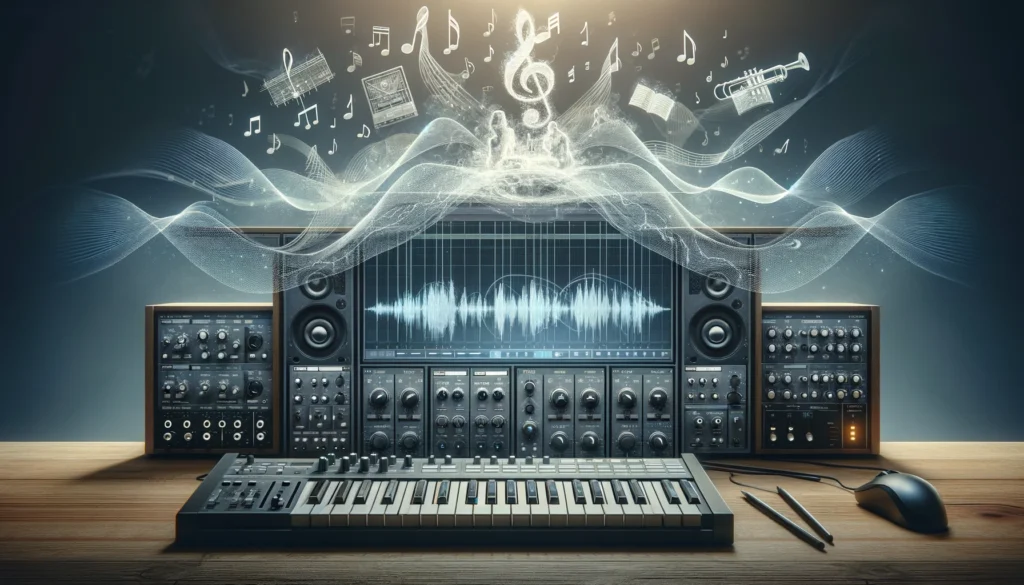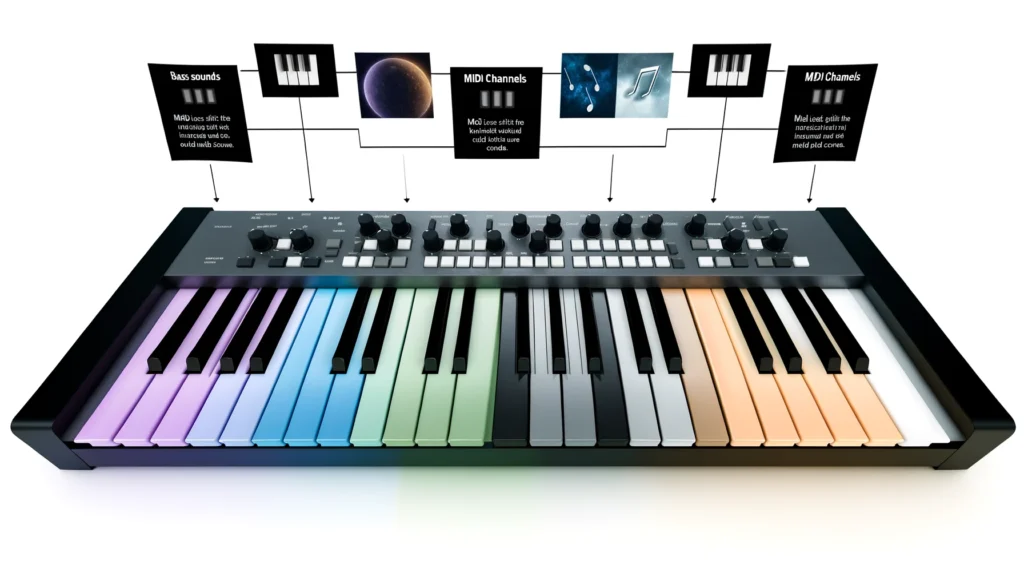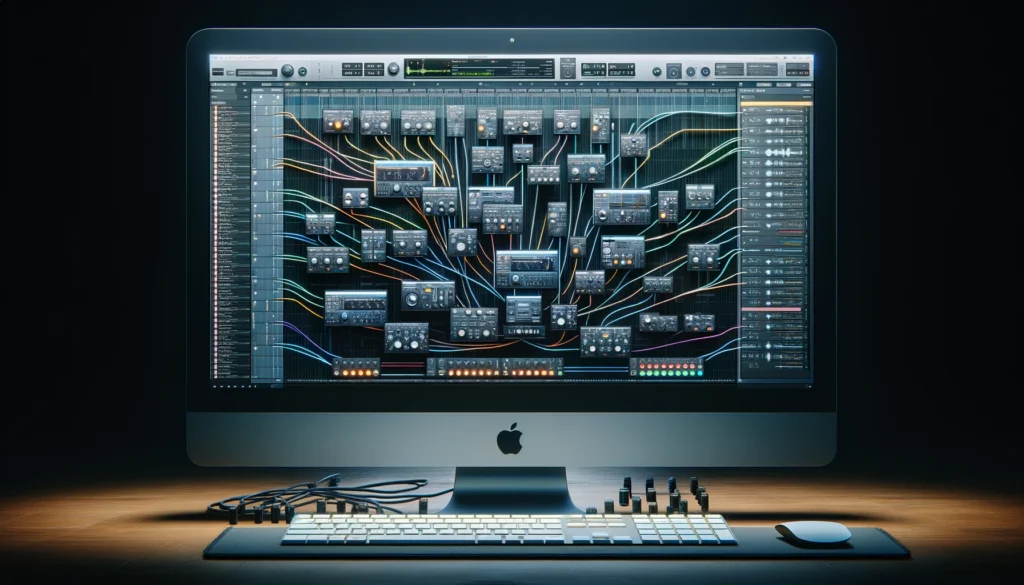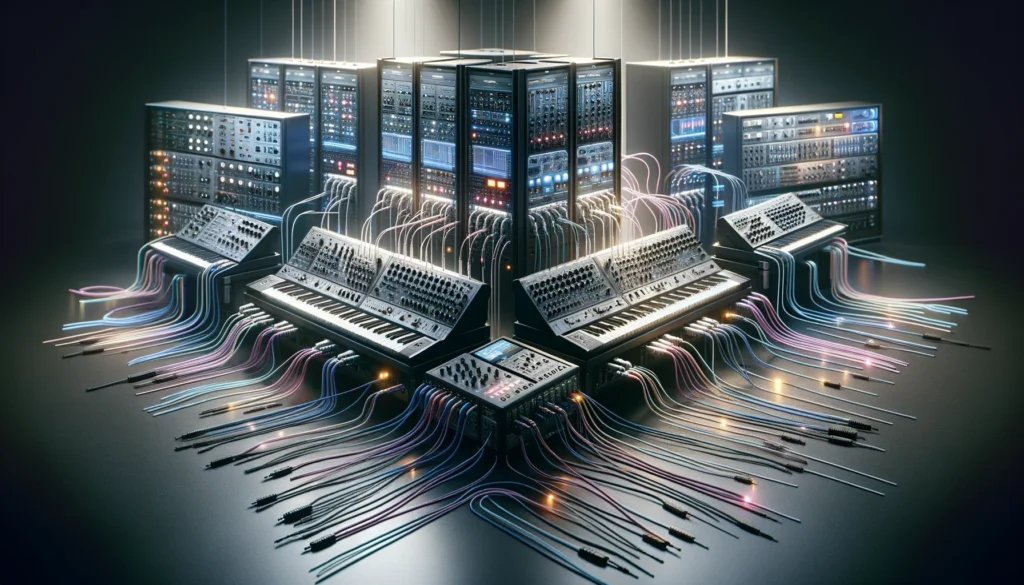From bedroom producers to arena EDM DJs, MIDI channels enable musical realms never before possible.
MIDI channels form the critical foundation for flexible and powerful contemporary music production.
Let’s dive in to understand six key reasons MIDI channels matter so much:
Instant Polyphony Via Multiple Notes

In short, MIDI channels allow multiple notes to play at once.
Attempting polyphony without channels forces all gear to play the same thing.
Channels isolate signals so harmony happens.
We’ll explore why this polyphonic capability is so musically important throughout the article.
Allow Separate Control of Multiple Instruments/Sounds

MIDI, which stands for Musical Instrument Digital Interface, has been an essential part of music production for decades.
MIDI channels, specifically, play a crucial role to enable enhanced functionality, flexibility, and creativity in today’s music.
Each MIDI channel forms an independent data path that allows for the separate transmission of control data to different instruments or devices.
The MIDI specification allows for 16 of these channels to exist within a system.
The presence of multiple channels becomes important because it prevents every connected MIDI-capable device or sound module from responding to the same incoming MIDI messages.
Without the differentiation provided by channels, all instruments would react indistinguishably in response to any and all messages being conveyed over MIDI.
This would make independent control of different devices impossible.
The use of channels enables each device or instrument to be configured to listen and respond on one assigned channel only.
This is what facilitates control of many instruments independently, as messages on Channel 1 only activate or alter sounds on the device set to Channel 1, Channel 2 messages go solely to the Channel 2 device, and so on for all 16 potential MIDI channels.
Enable Polyphonic Output

In addition to allowing for control over more instruments independently, MIDI channels serve a critical role in permitting polyphonic instead of only monophonic output in MIDI setups.
The term polyphonic refers to musical output that allows for multiple notes to be played or sounded simultaneously in harmony with one another.
Many instruments like pianos, guitars, and symphony orchestras are inherently capable of polyphony.
This means that they can produce harmonies made up of different pitches, multi-note chords, or countermelodies all at the same time.
By contrast, monophonic musical output only allows for one note to sound at a time.
For instance, most saxophones, trombones, and lead trumpets are monophonic instruments.
While musicians can change the pitch being played on these instruments rapidly to produce melodies and imply harmony, the instruments themselves remain incapable of playing stacked harmonies or chords.
Now in the context of MIDI, channel differentiation once again becomes necessary to facilitate polyphonic instead of only monophonic musical lines as output.
Without multiple channels available, all connected MIDI instruments would be controlled simultaneously by the same series of incoming MIDI note messages.
This would essentially force them all to play the same notes in unison and lock them to monophonic output reminiscent of a solo melodic line.
The presence of multiple MIDI channels, however, allows for certain channels to convey certain notes and pitches to certain instruments while other channels handle sending different notes and pitches to other instruments.
The combined output is then harmonious and polyphonic instead of being restricted to monophony.
This better resembles and takes advantage of the innate capabilities of many instruments to perform harmonically.
Allow Layering of Sounds

In addition to granting independent control over instruments and expanding potential harmonic capabilities in MIDI systems, the availability of 16 channels also enables more advanced sound design through the layering of instrument sounds.
Music production, particularly involving electronic instruments like synthesizers, often requires layering multiple instruments or patches together to create fuller, thicker, and more complex composite tonal textures.
For instance, layering string pads with brass stabs is a common technique to round out electronic arrangements in genres ranging from pop ballads to anthemic electro house.
However, successfully layering sounds requires the presence of distinguishable MIDI channels.
Attempting to trigger layered pads and stabs without utilizing channels would result in notes becoming summed or mixed together into a single indistinguishable sound.
The layering would fail to occur as intended.
With MIDI channels available, instruments like string pads can be set to listen and respond over a designated channel while brass stabs react exclusively to a different designated channel.
Even if notes over the channels overlap and trigger simultaneously, this keeps the string and brass articulations sufficiently decoupled to permit properly overlaying those textures within the full musical output mix.
Taking advantage of all 16 MIDI channels enables complex layering of many different patches at once.
Channels essentially enable exponentially greater possibilities for layered sound design complexity compared to being restricted to a single channel.
Facilitate Splitting of Keyboard Zones

MIDI channels also allow for creative splitting of keyboards into multiple playable instrument zones.
Many synthesizers allow users to set up keyboard splits, often using MIDI channels to determine the split points.
This allows musicians to play different instrument sounds in different physical ranges of the same keyboard.
For instance, synth players in live bands frequently utilize keyboard splits to enable basslines to be covered in the lower octaves while leads, pads, or comps occupy the upper range of the same keyboard.
Setting the lower half of the keyboard to transmit over MIDI Channel 1 to control a bass patch while the upper half sends its notes over Channel 2 to trigger leads and pads facilitates this split functionality.
Without utilizing MIDI channels to differentiate note data streams, it would be impossible to tailor certain keyboard ranges to address certain instruments or patches independently.
The keyboard zones would inherently overlap, preventing the isolation of ranges to govern specific sounds.
With MIDI channels, keyboardists can take full advantage of the standard five-octave range of most performance keyboards in expressive ways mirroring the capabilities of multi-instrumentalists.
The keyboard is essentially split into multiple instruments thanks to channels even though only one keyboard is being played.
Enable Complex Routing in DAWs

Digital Audio Workstations (DAWs) form the core software platforms used by modern music producers to record, edit, and perform computer-based music.
Within these production ecosystems, the power and flexibility of working with many MIDI channels becomes abundantly clear.
DAWs enable musicians to trigger and route software instruments and synth modules much like working with matrices of hardware in physical studios.
However, applying complex MIDI processing to facilitate creative workflows is only possible thanks to the presence of all 16 MIDI channels for distinguishing routings.
For example, producers often set up routing where MIDI data from a single played software instrument track gets echoed out dynamically to multiple software synth plugins.
By sending copies of the track’s MIDI notes to different instruments over different channels, highly layered custom composite sounds can be dialed up with ease.
This mirrors studio techniques used to replicate or split signals across chains of physical synth modules.
Without MIDI channels to select and separate signal paths to each instrument, the MIDI data would be forced to only drive one synth plugin at a time, severely limiting creative flexibility.
Similar examples across all genres illustrate the essential role channels play in enabling elaborate instrument layering, independent zone control, and advanced manipulation of MIDI data flow within the DAW production paradigm.
Essential for MIDI Implementation in Complex Setups

Finally, it is important to understand that while basic MIDI implementations may be able to get by with only utilizing a few channels at most, more professional and sophisticated MIDI applications make the most of the robust capabilities and control offered by all 16 available channels.
Large-scale live performances, touring acts, and studio complexes designed with MIDI in mind take full advantage of differentiated channels.
This may involve networks of rack synthesizers configured to enable matrix mixing capabilities across all channels.
Custom master keyboards with specialized channel splitting and layering functions also demonstrate advanced MIDI channel usage for dynamic sound control.
Even many single keyboard workstation synths design presets, live sets, and multi patches around sending different sounds across different channels to unlock more articulate musical control for solo artists during live playing.
Without the full set of independent channels available, far less complex MIDI relationships and musical arrangements would be possible.
The differentiation and information density offered by 16 channel MIDI unlocks extraordinary possibilities for flexible sound triggering solutions.
From solo performer setups to entire orchestra-REPLACING rigs…MIDI channels enable it all.
Conclusion
In conclusion, MIDI channels serve an invaluable role in facilitating musical creativity and flexibility when working with electronic instruments.
The differentiated routing, layering, splitting, and control opportunities unlocked by MIDI’s 16 channel design underpins everything from simple home studios to the most advanced live rigs and production ecosystems.
Without channels, MIDI could never have empowered the revolutionary changes that have transpired across the musical landscape since its advent.
Understanding channel basics helps demystify MIDI magic.
